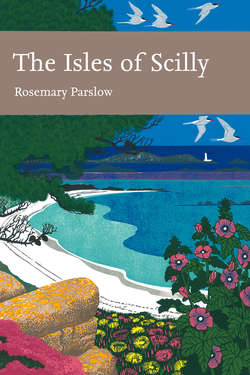Читать книгу The Isles of Scilly - Rosemary Parslow - Страница 42
FARMING
ОглавлениеThe observations of the many people who visited the Isles of Scilly over the centuries give only the most tantalisingly incomplete account of the life of the people at the time, and very little detail about the farming. Maddeningly, most authors have not confined themselves to their own first-hand experiences but have quoted liberally, repeating, frequently without acknowledgement, the observations of their predecessors. One gentleman who visited the islands, the Reverend George Woodley (1822), was also very scathing about his predecessors, Robert Heath, who spent a year on the islands, and John Troutbeck, who was the chaplain of the islands. Troutbeck published his account in 1794, but his information in turn appears to be based on the reports of Robert Heath (1750). From all the accounts it seems that one of the most important crops at the time was potatoes in great quantity, and in good years the islanders might get two crops a year. The islands were not very good for growing wheat, but barley, rye, oats, pillas (an oat-like grain eaten as a porridge, which even up to quite recent times was being grown alongside corn and root crops), peas, beans and roots all did well. Salads, gooseberries, currants, raspberries, strawberries – anything that can be sheltered below walls could be grown. Garlic, both cultivated and wild, samphire for distilling and pickling, all grew locally. Rock samphire Crithmum maritimum still grows around all rocky shores (Fig. 18), but it is no longer pickled and exported in small casks (Heath, 1750; Woodley, 1822).
According to Woodley (1822) the local horses were small and had to survive on poor fare that included gorse, which they bruised with their hooves before eating, the sheep were small, long-legged animals similar to those on the Scottish islands, and both the sheep and the small black cattle subsisted on seaweed when
FIG 18. Rock samphire collected from the shore was once used for pickling and distilling. (Rosemary Parslow)
there was no hay for them. The local hogs would also have to be fed on seaweed and even limpets at times, causing their flesh to be reddish in colour and giving them an unpleasant fishy taste.
Several of the uninhabited islands were used as summer grazing, as well as places where there were colonies of rabbits Oryctolagus cuniculus and seabirds that could be utilised to provide rabbit meat and gulls’ eggs. Sheep and deer were grazing on the Garrison, St Mary’s, when Walter White (1855) was there in the mid nineteenth century. He also describes hayfields, arable fields of grain, root crops and potatoes (the latter were sent to market at Covent Garden).
Sheep were kept on the islands until the beginning of the twentieth century, and although there are now very few they have never completely died out. There are sheep pictured beside the Punchbowl Rock on Wingletang, St Agnes (Mothersole, 1919), and the last time sheep were on the island was in 1926 at Troy Town. Goats were kept throughout the centuries and are still present on several holdings on the islands. Donkeys were very common at one time and were used to carry baskets of kelp up from the beach. The Gugh donkey Cuckoo became famous when Leslie Thomas wrote about him in Some Lovely Islands (1968). Until the mid-1950s horses were still used on some farms, but the only horses now on the islands are for riding, other than the Shetland ponies that are being used for conservation grazing on some of the important nature conservation sites.
One curious industry between about 1840 and 1880 was straw-plaiting for making hats (Matthews, 1960). Besides using wheat and rye straw various hollow-stemmed grasses were also utilised, including crested dog’s-tail Cynosurus cristatus and yellow oatgrass Trisetum flavescens. Crested dog’s-tail is still a common grass in the islands and yellow oatgrass was found on Teän as a relict of farming but has now disappeared.
